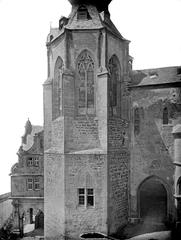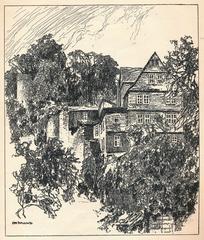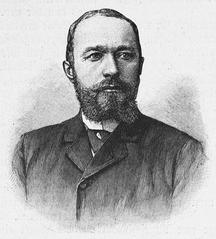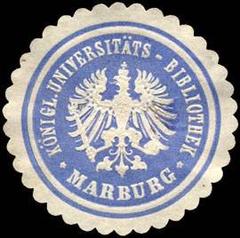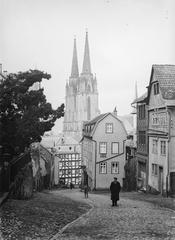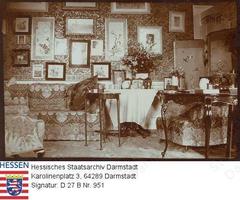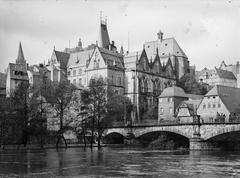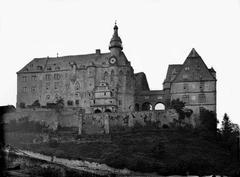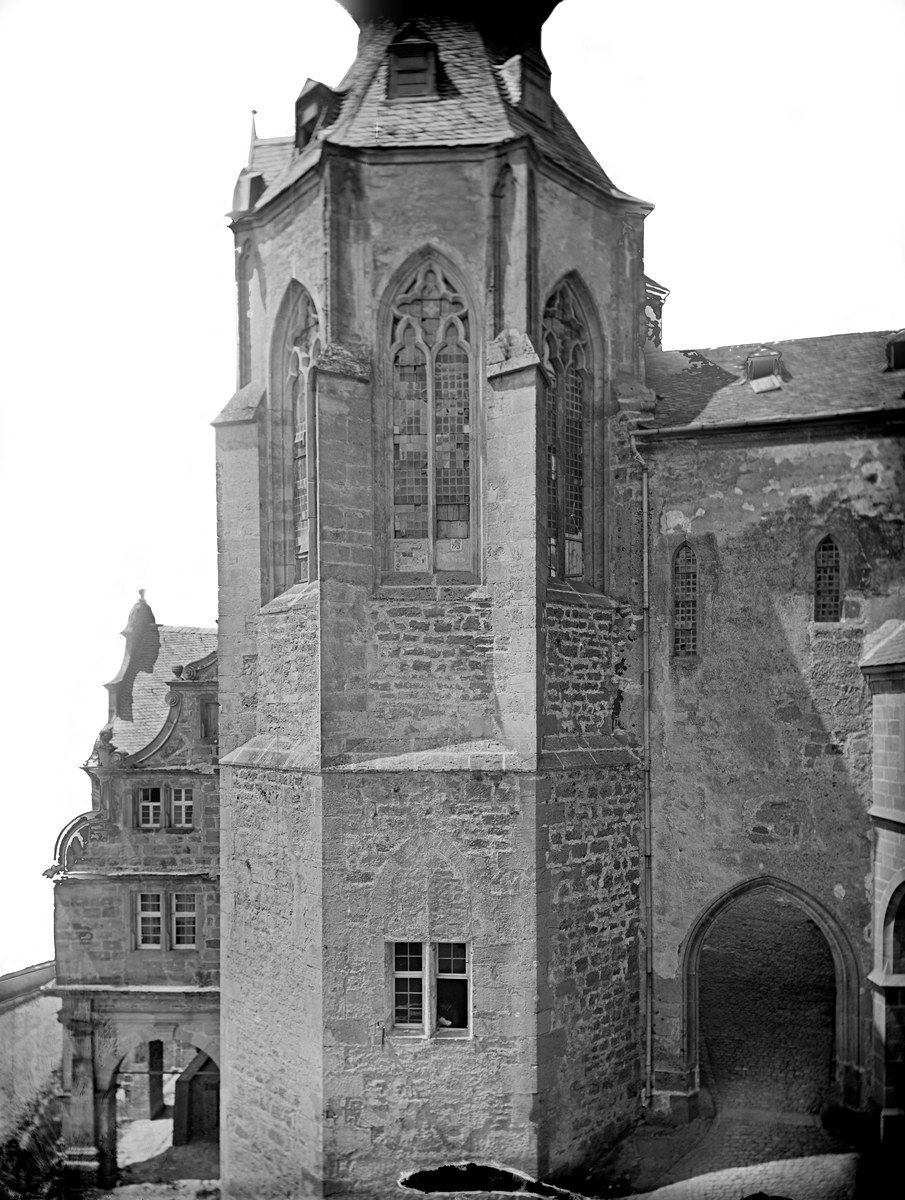
Marburger Schlosskapelle: Visiting Hours, Tickets, and Guide to Marburg Historical Sites
Date: 14/06/2025
Introduction
The Marburger Schlosskapelle, located within the storied Landgrafenschloss Marburg in Germany, is a striking example of early Gothic architecture and a significant cultural landmark. Consecrated in 1288 under Landgrave Heinrich I of Hesse, the chapel embodies both the architectural innovations and the spiritual ambitions of the medieval ruling dynasty. Its ribbed vaults, slender sandstone columns, and remarkably preserved frescoes provide an immersive experience for visitors interested in art, history, and architecture. As a venue for pivotal historical events such as the Marburg Colloquy of 1529, the chapel’s legacy extends beyond its walls, symbolizing Marburg’s role in European religious and political history.
This guide consolidates all essential information for planning your visit—covering opening hours, tickets, accessibility, travel tips, and nearby attractions—so you can fully enjoy one of Marburg’s most treasured sites. For further details and the latest updates, refer to official resources like the Marburg city portal and the University of Marburg museum website.
Table of Contents
- Introduction
- History and Construction
- Architectural Features and Artistic Significance
- Historical Role and Notable Events
- Visiting the Schlosskapelle: Hours, Tickets, and Essential Information
- Preservation and Modern Use
- The Schlosskapelle in European Context
- Visitor Tips and Photographic Spots
- Frequently Asked Questions (FAQ)
- Conclusion
- References
History and Construction
The Marburger Schlosskapelle forms part of the Landgrafenschloss, a fortress and princely residence overlooking Marburg since the 11th century. The chapel was commissioned during a significant expansion in the late 13th century and consecrated in 1288. This transformation marked the shift from a defensive fortress to a seat of princely authority, with the chapel serving both as a private worship space and a symbol of dynastic legitimacy. The early Gothic style, characterized by ribbed vaults and pointed arches, reflects the architectural trends spreading throughout Central Europe at the time (marburg.de; de.wikipedia.org).
Architectural Features and Artistic Significance
The Schlosskapelle is celebrated for its architectural integrity and artistic treasures:
- Design: The single-nave structure features a ribbed vault and a polygonal apse. Constructed from local sandstone, its slender columns and pointed arches create an impression of verticality and elegance.
- Frescoes: The interior is adorned with medieval frescoes depicting biblical scenes and saints, some dating to the late 13th century. Their preservation offers invaluable insights into medieval religious art (castrumtocastle.com).
- Stained Glass: The original stained glass windows, especially vibrant on sunny days, are a highlight for visitors.
- Liturgical Furnishings: Elements such as the stone altar, sedilia, and piscina with intricate tracery remain from the medieval period.
The chapel’s proximity to the Fürstensaal (Prince’s Hall) underscores its dual function as a religious sanctuary and an emblem of secular authority.
Historical Role and Notable Events
The Marburger Schlosskapelle has been the backdrop for significant historical events. As the spiritual heart of the Landgraves’ residence, it hosted daily worship and court ceremonies. The 1529 Marburg Colloquy, a landmark in Reformation history, took place in the castle, with the chapel providing a solemn setting for reflection and prayer (nomads-travel-guide.com). During the Reformation, Landgrave Philip the Magnanimous used the castle as a center for religious and political reform (whichmuseum.com).
Visiting the Schlosskapelle: Hours, Tickets, and Essential Information
Opening Hours
- April to October: Tuesday to Sunday, 10:00–18:00
- November to March: Tuesday to Sunday, 10:00–16:00
- Closed Mondays
- Holidays and Special Events: Hours may vary; check the official website for current details.
Tickets and Admission
- General Admission: Entry to the chapel is included in the castle museum ticket.
- Prices: Tickets are approximately €8 for adults, with discounts for students, seniors, and groups. Children under 6 enter free. Family and group tickets are available (whichmuseum.com).
- Booking: Tickets can be purchased online or at the museum entrance. Booking in advance is recommended for special events or guided tours.
Accessibility
- The main exhibition areas are wheelchair accessible, though some historic sections may have uneven floors or steps due to preservation.
- Ramps and elevators are present where possible; a shuttle service operates during peak seasons to assist with the steep approach from Marburg’s old town (Triplyzer).
- Accessible restrooms and a cloakroom are available on site.
- Visitors with additional needs should contact the museum in advance for detailed accessibility information.
Getting There and Nearby Attractions
- Location: Schloss 1, 35037 Marburg, Germany
- Transport: The castle is a 15–20 minute uphill walk from the city center; local buses and taxis provide alternatives.
- Nearby: The Fürstensaal, Elisabethkirche, Marburg’s Altstadt (old town), and the Lahn River promenade are all within easy reach.
Special Events and Photography
- Marburger Schlosskonzerte: The chapel hosts renowned concerts renowned for their acoustics. Advance booking is advised (marburg-tourismus.de).
- Photography: Non-flash photography is allowed. Flash and tripods are restricted to protect artworks.
- Dress Code: Smart attire is recommended for concerts and religious services.
Preservation and Modern Use
The chapel has undergone extensive restoration, especially in the 19th and 20th centuries, to safeguard its Gothic features and medieval frescoes (theadventurelion.com). Today, it serves as a highlight of the castle museum and a vibrant venue for cultural events, bridging Marburg’s medieval heritage with contemporary appreciation.
The Schlosskapelle in European Context
As an early and well-preserved example of a Gothic castle chapel in Central Europe, the Marburger Schlosskapelle offers valuable insights into the interplay between sacred and secular power in the Middle Ages. Its architecture and art continue to inform the study of medieval religious life and Gothic influence in Germany (arthist.net).
Visitor Tips and Photographic Spots
- Best Visiting Times: Early mornings or late afternoons are quieter. May–September offers pleasant weather and blooming gardens.
- Footwear: Wear comfortable shoes due to uneven floors and hilly terrain.
- Photography: The best light for stained glass and frescoes is on sunny afternoons.
- Map and Virtual Tours: Interactive maps and virtual tours are available on the museum website.
- Nearby Exploration: After your visit, stroll through the old town or along the Lahn River for a complete Marburg experience.
Frequently Asked Questions (FAQ)
What are the Marburger Schlosskapelle visiting hours?
The chapel is open Tuesday to Sunday, with hours varying seasonally (generally 10:00–18:00 in summer and 10:00–16:00 in winter). Closed Mondays.
How can I buy tickets?
Tickets are available online or at the entrance. Combination tickets for the castle and museum are also offered.
Is the chapel wheelchair accessible?
Yes, main areas are accessible. Some sections have limited access; a shuttle and accessible facilities are provided.
Are guided tours available?
Yes, in German and (by arrangement) English. Thematic tours focus on medieval music, the Reformation, and art history.
Can I take photographs inside the chapel?
Non-flash photography is permitted. Flash and tripods are restricted.
Conclusion
The Marburger Schlosskapelle is a must-visit destination in Marburg, offering a rich blend of Gothic architecture, medieval art, and historical resonance. Its well-preserved interior, engaging events, and accessible facilities ensure a rewarding experience for all visitors. For the best experience, plan your visit around the chapel’s opening hours, book tickets in advance, and explore the surrounding castle and Marburg’s old town.
For further information, updates, and event bookings, consult official resources such as the Marburg tourism website and the University of Marburg museum portal. Enhance your visit with the Audiala app for audio guides and interactive maps, and stay connected on social media for exclusive content.
References
- Visiting the Marburger Schlosskapelle: Hours, Tickets, History, and Travel Tips, 2025, (marburg.de)
- Visiting the Marburger Schlosskapelle: Hours, Tickets, and Historical Insights, 2025, (uni-marburg.de)
- Visiting the Marburger Schlosskapelle: Hours, Tickets, and Historical Highlights of Marburg’s Iconic Chapel, 2025, (trip.com)
- Visitor Information and Tips, 2025, (marburg-tourismus.de)
- Marburg Colloquy and Reformation History, 2025, (nomads-travel-guide.com)
- Preservation of Marburger Schlosskapelle and Cultural Events, 2025, (theadventurelion.com)
- Architectural Context and Gothic Influence, 2025, (castrumtocastle.com)
- Museum Accessibility and Visitor Services, 2025, (whichmuseum.com)
